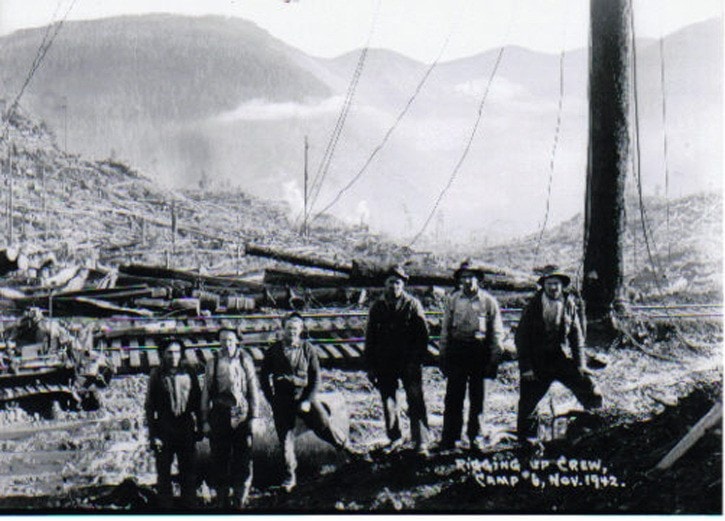Last weeks column featured the first in a series about the local forest industry with the introduction of lifetime Camp Six/Caycuse logger, the late Al Norman (father of Rob Norman. The Norman family saga continues with this week’s column, written by columnist Rolli Gunderson.
The beginning of three generations of Norman men and their association with Camp Six began about 1886 in Finland, with the birth of Henry Norman. By about 1908, Henry had left his homeland and was logging large Cypress trees in the infamous swamps of Louisiana.
Because logging back then was (and still is) dangerous and difficult, it took a special breed of men to be a logger. Scandinavian loggers, which included Henry, were known as ‘the best.’
By 1910, Henry had found his way to Seattle where he took charge of a logging crew using one of the new machines, the Ledgerwood Skidder. Ideal for the steep mountain terrain of BC, Empire Timber Co., bought one of the new skidders to log their huge timber holdings around Cowichan Lake.
The job of running the machine and training the new crew on the methods of “skidder logging”, went to the logger from Finland, Henry Norman.
Consequently, from 1913 onward it was Henry who was responsible for logging off the area that now encompasses the community of Youbou and surrounding area.
On February 15, 1913, Henry married Esther Solmie who had immigrated to Canada from Finland with her family. The couple went on to have five children, including their only son, Al Norman. During their early years, the family lived in Ladysmith while Henry worked the Cowichan Lake area, rigging on skidders.
Later, he moved his family into a float house he had purchased in Youbou.
In his book, Ken Hallberg – An Autobiography (2010), Hallberg recalled “In 1926, Gilson & McCoy signed a contract to log the Nixon Creek valley for Empire Lumber Company. They then moved all the buildings that were on log rafts - cookhouse, offices, company store and bunkhouses, [up the lake from Youbou] to a sheltered bay.
Henry moved his float house and tied up alongside the cookhouse. Some of the old bunkhouses were set up on land for families to move into. Practically overnight, it became a small town. They called this new community Camp Six” (later known as Caycuse).
And so it was that the Norman family ended up at Camp Six on Cowichan Lake.
Apart from a year spent in Russia during the Depression, where Henry had taken his family after securing employment, the family lived in Camp Six.
Hallberg also recalled that when the Normans returned to Camp Six from Russia, their house was waiting for them.
During the year away, Hallberg had assumed Henry’s job as skidder rigger. After the Norman’s return Hallberg was promoted to woods foreman and Henry returned to his previous job as skidder rigger. Eventually, young Al started working at Camp Six alongside his father.
Upon nearing the end of his life in 1953, Henry left the hospital and returned home to Camp Six, to die. He was 67.
Hallberg later recalled his friends death: “When he died, I, along with his son and a couple of friends carried him down to the company boat [there was no road out of Camp Six then] on a stretcher and we took him to Youbou were a hearse was waiting to take him to Duncan. I took a bottle of rum along because I knew that would [have been] Henry’s last wish.”
